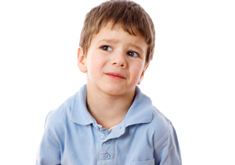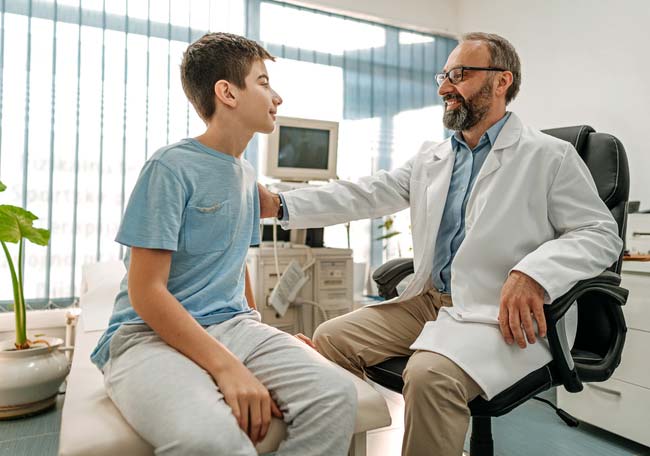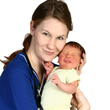Testículos no descendidos

1. Ghirri P, Ciulli C, Vuerich M, et al. Incidence at birth and natural history of cryptorchidism: a study of 10,730 consecutive male infants. J Endocrinol Invest. 2002; 25(8):709–715
2. Boisen KA, Kaleva M, Main KM, et al. Difference in prevalence of congenital cryptorchidism in infants between two Nordic countries. Lancet. 2004; 363(9417):1264–1269
3. Hack WW, Goede J, van der Voort-Doedens LM, Meijer RW. Acquired undescended testis: putting the pieces together. Int J Androl. 2012; 35(1):41–45
4. Yiee JH, Saigal CS, Lai J, Copp HL, Churchill BM, Litwin MS; Urologic Diseases in America Project. Timing of orchiopexy in the United States: a quality-of-care indicator. Urology. 2012;80(5):1121–1126
5. Taran I, Elder JS. Results of orchiopexy for the undescended testis. World J Urol. 2006; 24(3):231–239
6. Lip SZ, Murchison LE, Cullis PS, Govan L, Carachi R. A meta-analysis of the risk of boys with isolated cryptorchidism developing testicular cancer in later life. Arch Dis Child. 2013; 98(1):20–26
7. Ong C, Hasthorpe S, Hutson JM. Germ cell development in the descended and cryptorchid testis and the effects of hormonal manipulation. Pediatr Surg Int. 2005; 21(4):240–254
8. Chan E, Wayne C, Nasr A; FRCSC for Canadian Association of Pediatric Surgeon Evidence-Based Resource. Ideal timing of orchiopexy: a systematic review. Pediatr Surg Int. 2014; 30(1):87–97
9. Kolon TF, Herndon CD, Baker LA, et al; American Urological Assocation. Evaluation and treatment of cryptorchidism: AUA guideline. J Urol. 2014; 192(2):337–345
10. European Association of Urology. Guidelines of Pediatric Urology. Available at uroweb. org/ wp- content/uploads/ 22- Paediatric- Urology. Pdf Accessed November 2014 11. Hrivatakis G, Astfalk W, Schmidt A, et al. The timing of surgery for undescended testis: a retrospective multicenter analysis. Dtsch Arztebl Int. 2014; 111(39):649–657 12. Cortes D, Thorup JM, Visfeldt J. Cryptorchidism: aspects of fertility and neoplasms. A study including data of 1,335 consecutive boys who underwent testicular biopsy simultaneously with surgery for cryptorchidism. Horm Res. 2001; 55(1):21–27
13. Australian Bureau of Statistics. Health Care Delivery and Financing. Available at
http:// www. abs. gov. au/ ausstats/ abs@. nsf/ Lookup/by Subject/1301.0~2012~Main Features~Health car. Accessed November 2014
14. Ransley PG, Vordermark JS, Caldamone AA, Bellinger MF. Preliminary ligation of the gonadal vessels prior to orchidopexy for the intra-abdominal testicle: a staged Fowler-Stephens procedure. World JUrol. 1984; 2(4):266–268
15. Australian Government Department of Health. Measuring Remoteness: Accessibility/Remoteness Index of Australia (ARIA). Available at
http://www. health. gov. au/ internet/ main/publishing. nsf/Content/healthhistoricpubs-hfsocc-ocpanew14a..Accessed November 2014
16. Australian Bureau of Statistics. Census of Population and Housing: Socio-Economic Indexes for Areas (SEIFA). Available at www. abs. gov. au/websitedbs/ censushome. nsf/ home/seifa. Accessed November 2014
17. Jensen MS, Olsen LH, Thulstrup AM, Bonde JP, Olsen J, Henriksen TB. Age at cryptorchidism diagnosis and orchiopexy in Denmark: a population based study of 508,964 boys born from 1995 to 2009. J Urol. 2011; 186(4 Suppl):1595–1600
18. International Clearinghouse for Birth Defects Surveillance and Research. Annual Report (with data for 2009). Available at www. icbdsr. org/fi lebank/documents/ar2005/ Report2011. pdf. Accessed November 2014
19. Bonney T, Southwell B, Donnath S, Newgreen D, Hutson J. Orchidopexy trends in the paediatric population of Victoria, 1999-2006. J Pediatr Surg. 2009; 44(2):427–431
20. Western Australian Register of Developmental Anomalies (WARDA). Report of the Western Australian Register of Developmental Anomalies 1980-2013. Available at www. kemh. health. wa. gov. au/ services/ register_developmental_ anomalies/ documents/2014_ Annual_ Report_ of_ the_WA_ Register_ of_ Developmental_Abnormalities. pdf. Accessed November 2014
21. Baker LA, Docimo SG, Surer I, et al. A multi-institutional analysis of laparoscopic orchidopexy. BJU Int. 2001; 87(6):484–489
22. Carson JS, Cusick R, Mercer A, et al. Undescended testes: does age at orchiopexy affect survival of the testis? J Pediatr Surg. 2014; 49(5):770–773
23. Banks K, Tuazon E, Berhane K, et al. Cryptorchidism and testicular germ cell tumors: comprehensive metaanalysis reveals that association between these conditions diminished over time and is modified by clinical characteristics. Front Endocrinol (Lausanne). 2012; 8(3):182
24. Feyles F, Peiretti V, Mussa A, et al. Improved sperm count and motility in young men surgically treated for cryptorchidism in the first year of life. Eur J Pediatr Surg. 2014; 24(5):376–380
25. Kollin C, Karpe B, Hesser U, Granholm T, Ritzén EM. Surgical treatment of unilaterally undescended testes: testicular growth after randomization to orchiopexy at age 9 months or 3 years. J Urol. 2007; 178(4 Pt 2):1589–1593, discussion 1593
26. Trsinar B, Muravec UR. Fertility potential after unilateral and bilateral orchidopexy for cryptorchidism. World J Urol. 2009; 27(4):513–519
27. Lee PA, Coughlin MT. Fertility after bilateral cryptorchidism. Evaluation by paternity, hormone, and semen data. Horm Res. 2001; 55(1):28–32
28. Barthold JS, González R. The epidemiology of congenital cryptorchidism, testicular ascent and orchiopexy. J Urol. 2003; 170(6 Pt 1):2396–2401
29. Springer A, Subramaniam R, Krall C, Fülöp G. Orchidopexy patterns in Austria from 1993 to 2009. J PediatrUrol. 2013; 9(5):535–541
30. Nah SA, Yeo CS, How GY, et al. Undescended testis: 513 patients’ characteristics, age at orchidopexy and patterns of referral. Arch Dis Child. 2014; 99(5):401–406
31. Wohlfahrt-Veje C, Boisen KA, Boas M, et al. Acquired cryptorchidism is frequent in infancy and childhood. Int J Androl. 2009; 32(4):423–428
32. Beasley SW. Are changes in referral patterns always justifi ed? ANZ J Surg. 2012; 82(9):572–573
33. Wilson BE, Cheney L, Patel B, Holland AJ. Appendicectomy at a children’s hospital: what has changed over a decade? ANZ J Surg. 2012; 82(9):639–643
34. Preiksa RT, Zilaitiene B, Matulevicius V, et al. Higher than expected prevalence of congenital cryptorchidism in Lithuania: a study of 1204 boys at birth and 1 year follow-up. Hum Reprod. 2005; 20(7):1928–1932
35. Brown JJ, Wacogne I, Fleckney S, Jones L, Ni Bhrolchain C. Achieving early surgery for undescended testes: quality improvement through a multifaceted approach to guideline implementation. Child Care Health Dev. 2004; 30(2):97–102
36. Bradshaw CJ, Corbet-Burcher G, and Hitchcock R. Age at orchidopexy in the UK: has new evidence changed practice? J Pediatr Urol 2014; 10(4):758–762
37. NSW Government Health. Guide to the Role Delineation of Health Services. Third edition. Available at www. health. nsw. gov. au/ services/ Publications/guide- role- delineation- health- services. pdf. Accessed November 2014
38. Bruijnen CJ, Vogels HD, Beasley SW.Age at orchidopexy as an indicator of the quality of regional child health services. J Paediatr Child Health. 2012; 48(7):556–559
39. Lain SJ, Hadfi eld RM, Raynes-Greenow CH, et al. Quality of data in perinatal population health databases: a systematic review. Med Care. 2012; 50(4):e7–e20
40. Metcalfe A, Sibbald B, Lowry RB, Tough S, Bernier FP. Validation of congenital anomaly coding in Canada’s administrative databases compared with a congenital anomaly registry. Birth Defects Res A Clin Mol Teratol. 2014; 100(2):59–66
Comentarios
Para ver los comentarios de sus colegas o para expresar su opinión debe ingresar con su cuenta de IntraMed.









